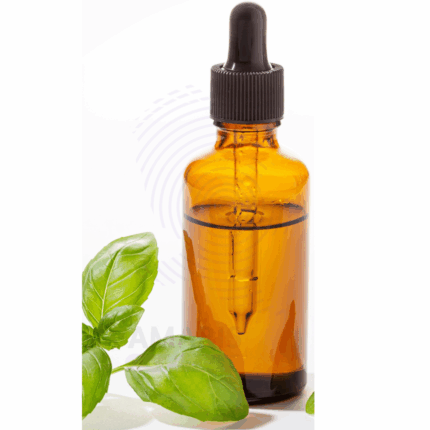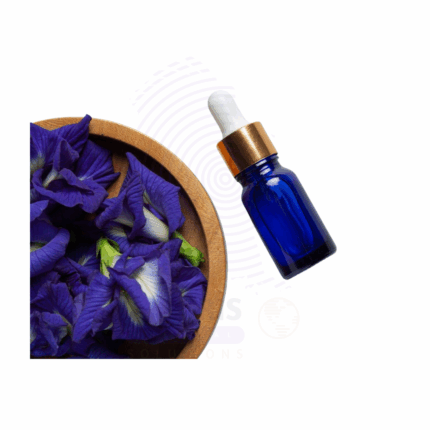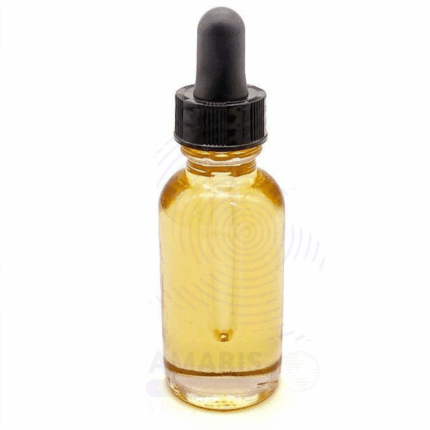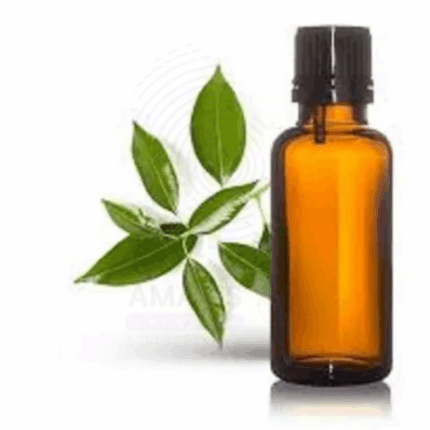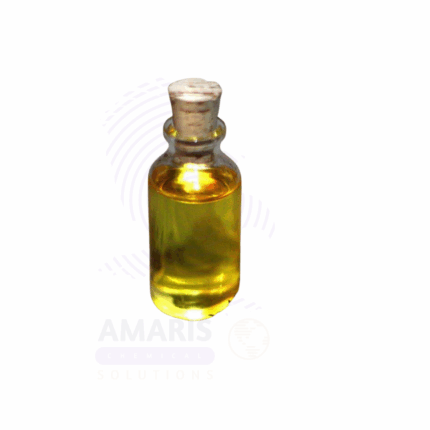
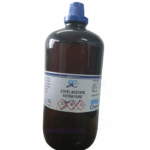
Ylang Ylang Oil
$ 58.70 Original price was: $ 58.70.$ 58.59Current price is: $ 58.59.
Ylang Ylang Oil is a luxurious essential oil obtained through steam distillation of the fresh flowers of Cananga odorata, a tropical tree native to Southeast Asia. Known for its rich, sweet, floral, and exotic fragrance with hints of jasmine and neroli, this oil is highly prized in perfumery and aromatherapy. Its chemical composition includes benzyl acetate, linalool, and germacrene D, contributing to its calming, aphrodisiac, antiseptic, and anti-inflammatory properties. Traditionally used in beauty rituals and wellness therapies, Ylang-Ylang Oil supports emotional balance, skin health, and relaxation. It is widely utilized in cosmetics, personal care, spa treatments, and high-end fragrances.
Ylang Ylang Oil
Primary Uses
- Aromatherapy & Wellness
- Diffused to reduce stress, anxiety, and promote restful sleep
- Incorporated in massage oils to relieve muscle tension and induce relaxation
- Used in calming blends to uplift mood and reduce feelings of depression or nervous tension
- Applied in skincare aromatherapy for balancing oily or combination skin
- Cosmetics and Personal Care
- Added to perfumes, colognes, and body sprays for its distinctive sweet floral aroma
- Included in facial creams and serums to support skin regeneration and hydration
- Used in hair care products to stimulate scalp circulation and improve hair texture
- Incorporated in bath oils, body lotions, and soaps for soothing and aromatic effects
- Topical Applications
- Diluted and applied to skin for its antiseptic and anti-inflammatory benefits
- Used in natural aphrodisiac blends and sensual massage oils
- Applied in scalp treatments to reduce dandruff and enhance hair growth
Secondary Uses
- Fragrance and Ambient Scenting
- Used as a middle to base note in luxury perfumes, scented candles, and room sprays
- Blended in ambient scenting products to create exotic, floral atmospheres in spas and homes
- Cleaning and Detergent Products
- Added to natural cleaning sprays and detergents for a pleasant floral fragrance
- Incorporated in air fresheners and linen sprays to impart a long-lasting exotic scent
- Pharmaceutical and Therapeutic Products
- Employed in natural antiseptic formulations and wound healing ointments
- Used in therapeutic massage oils and balms to enhance relaxation and pain relief
- Industrial and Specialty Applications
- Utilized in high-end personal care and fragrance product lines
- Incorporated in aromatherapy diffusers and wellness device blends
| PACK SIZE |
5kg |
|---|
1. Basic Identification Attributes
- Botanical Name: Cananga odorata
- Common/Trade Name: Ylang-Ylang Oil
- INCI Name: Cananga Odorata Flower Oil
- CAS Number: 8006-81-3
- HS Code: 3301.29
- Synonyms: Cananga Oil, Ylang-Ylang Essential Oil
2. Physical & Chemical Properties
- Physical State: Liquid essential oil
- Color & Odor: Pale yellow to deep amber; rich, sweet, floral, and exotic fragrance
- Solubility: Insoluble in water; soluble in alcohol and fixed oils
- Refractive Index: 1.485 – 1.490
- Specific Gravity: 0.900 – 0.980
- Main Components: Benzyl acetate, linalool, germacrene D, methyl benzoate
3. Safety & Hazard Attributes
- GHS Classification: May cause skin irritation or sensitization; use diluted
- Toxicity: Low toxicity with appropriate dilution; for external use only
- Exposure Limits: Follow Safety Data Sheet (SDS) recommendations
- Allergen Information: Contains natural allergens including linalool and benzyl acetate
4. Storage & Handling Attributes
- Storage Conditions: Store in a cool, dark, and dry place away from sunlight and heat
- Container Type: Amber glass bottles or aluminum containers with airtight seals
- Shelf Life: 24 to 36 months if stored properly
- Handling Precautions: Use gloves and eye protection during bulk handling; avoid inhalation of concentrated vapors
5. Regulatory & Compliance Attributes
- Compliant with IFRA standards for fragrance safety
- Produced in GMP-certified facilities
- Not classified as hazardous for transport under standard regulations
6. Environmental & Health Impact
- Biodegradability: Biodegradable under normal conditions
- Ecotoxicity: Low aquatic toxicity at typical use concentrations
- Bioaccumulation: Not expected to bioaccumulate
Safety Handling Precautions
- PPE Required: Gloves, goggles, and adequate ventilation recommended
- Handling Guidelines: Avoid skin contact and inhalation of vapors; work in ventilated areas
First Aid Measures
- Inhalation: Move to fresh air; seek medical attention if symptoms persist
- Skin Contact: Wash with soap and water; discontinue use if irritation occurs
- Eye Contact: Rinse with plenty of water for at least 15 minutes; seek medical care if needed
- Ingestion: Do not induce vomiting; seek immediate medical attention
Firefighting Measures
- Fire Hazards: Flammable liquid and vapor
- Extinguishing Media: Foam, dry chemical, carbon dioxide, or water spray
- Special Precautions: Use full protective gear and breathing apparatus
- Hazardous Combustion Products: Carbon monoxide, carbon dioxide, and other toxic fumes


 Preservatives(food)
Preservatives(food) Flavor Enhancers
Flavor Enhancers Acidulants
Acidulants Sweeteners
Sweeteners Antioxidants
Antioxidants Colorants(food)
Colorants(food) Nutraceutical Ingredients (food)
Nutraceutical Ingredients (food) Nutrient Supplements
Nutrient Supplements Emulsifiers
Emulsifiers
 Collectors
Collectors Dust Suppressants
Dust Suppressants Explosives and Blasting Agents
Explosives and Blasting Agents Flocculants and Coagulants
Flocculants and Coagulants Frothers
Frothers Leaching Agents
Leaching Agents pH Modifiers
pH Modifiers Precious Metal Extraction Agents
Precious Metal Extraction Agents
 Antioxidants(plastic)
Antioxidants(plastic) Colorants (Pigments, Dyes)
Colorants (Pigments, Dyes) Fillers and Reinforcements
Fillers and Reinforcements Flame Retardants
Flame Retardants Monomers
Monomers Plasticizers
Plasticizers Polymerization Initiators
Polymerization Initiators Stabilizers (UV, Heat)
Stabilizers (UV, Heat)
 Antifoaming Agents
Antifoaming Agents Chelating Agents
Chelating Agents Coagulants and Flocculants
Coagulants and Flocculants Corrosion Inhibitors
Corrosion Inhibitors Disinfectants and Biocides
Disinfectants and Biocides Oxidizing Agents
Oxidizing Agents pH Adjusters
pH Adjusters Scale Inhibitors( water)
Scale Inhibitors( water)
 Antioxidants(cosmetic)
Antioxidants(cosmetic) Emollients
Emollients Fragrances and Essential Oils
Fragrances and Essential Oils Humectants
Humectants Preservatives
Preservatives Surfactants(cosmetic)
Surfactants(cosmetic) Thickeners
Thickeners UV Filters
UV Filters
 Fertilizers
Fertilizers Soil Conditioners
Soil Conditioners Plant Growth Regulators
Plant Growth Regulators Animal Feed Additives
Animal Feed Additives Biostimulants
Biostimulants Pesticides (Herbicides, Insecticides, Fungicides)
Pesticides (Herbicides, Insecticides, Fungicides)
 Active Pharmaceutical Ingredients (APIs)
Active Pharmaceutical Ingredients (APIs) Excipients
Excipients Solvents(pharmaceutical)
Solvents(pharmaceutical) Antibiotics
Antibiotics Antiseptics and Disinfectants
Antiseptics and Disinfectants Vaccine Adjuvants
Vaccine Adjuvants Nutraceutical Ingredients (pharmaceutical)
Nutraceutical Ingredients (pharmaceutical) Analgesics & Antipyretics
Analgesics & Antipyretics
 Analytical Reagents
Analytical Reagents Solvents(lab)
Solvents(lab) Chromatography Chemicals
Chromatography Chemicals Spectroscopy Reagents
Spectroscopy Reagents microbiology-and-cell-culture-reagents
microbiology-and-cell-culture-reagents Molecular Biology Reagents
Molecular Biology Reagents Biochemical Reagents
Biochemical Reagents Inorganic and Organic Standards
Inorganic and Organic Standards Laboratory Safety Chemicals
Laboratory Safety Chemicals Specialty Laboratory Chemicals(Special Laboratory Equipment)
Specialty Laboratory Chemicals(Special Laboratory Equipment)
 Demulsifiers
Demulsifiers Hydraulic Fracturing Fluids
Hydraulic Fracturing Fluids Scale Inhibitors(oil)
Scale Inhibitors(oil) Surfactants(oil)
Surfactants(oil) Drilling Fluids
Drilling Fluids
 Dyes and Pigments
Dyes and Pigments Bleaching Agents
Bleaching Agents Softening Agents
Softening Agents Finishing Agents
Finishing Agents Antistatic Agents
Antistatic Agents
 Admixtures
Admixtures Waterproofing Agents
Waterproofing Agents Sealants and Adhesives
Sealants and Adhesives Curing Compounds
Curing Compounds Concrete Repair Chemicals
Concrete Repair Chemicals Anti-Corrosion Coatings
Anti-Corrosion Coatings
 Surfactants(cleaning)
Surfactants(cleaning) Builders
Builders Enzymes
Enzymes Solvents (Cleaning)
Solvents (Cleaning) Fragrances
Fragrances
 Electronic Chemicals
Electronic Chemicals Catalysts
Catalysts Lubricants
Lubricants Photographic Chemicals
Photographic Chemicals Refrigerants
Refrigerants Automotive chemicals
Automotive chemicals Pyrotechnic Chemicals
Pyrotechnic Chemicals
 Biodegradable Surfactants
Biodegradable Surfactants Bio-based Solvents
Bio-based Solvents Renewable Polymers
Renewable Polymers Carbon Capture Chemicals
Carbon Capture Chemicals Wastewater Treatment Chemicals
Wastewater Treatment Chemicals
 Pigments
Pigments Solvents(paint)
Solvents(paint) Specialty Coatings
Specialty Coatings Binders/Resins
Binders/Resins Additives
Additives Driers
Driers Anti-Corrosion Agents
Anti-Corrosion Agents Functional Coatings
Functional Coatings Application-Specific Coatings
Application-Specific Coatings
 Fresh Herbs
Fresh Herbs Ground Spices
Ground Spices Whole Spices
Whole Spices Spice Blends
Spice Blends Dried Herbs
Dried Herbs
 Leavening Agents
Leavening Agents Dough Conditioners
Dough Conditioners Flour Treatments
Flour Treatments Fat Replacers
Fat Replacers Decoratives
Decoratives Preservatives(baking)
Preservatives(baking)
 Plasticizers & Softeners
Plasticizers & Softeners Reinforcing Agents
Reinforcing Agents Adhesion Promoters
Adhesion Promoters Vulcanizing Agents
Vulcanizing Agents Antidegradants
Antidegradants Blowing Agents
Blowing Agents Fillers & Extenders
Fillers & Extenders Accelerators & Retarders
Accelerators & Retarders






